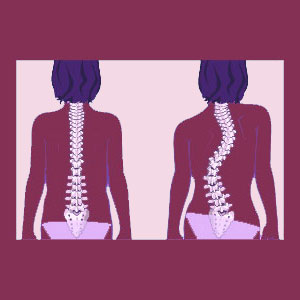
Why is scoliosis more common in girls and in women, in general? Science has put much effort into answering this question and doctors now have several plausible, but incomplete theories. Hopefully, the future will provide greater and definitive clarification of why scoliosis tends to affect females more often than males.
This dialog answers the common question of why lateral spinal curvature is found far more frequently in females than in males of almost any age. We will also explore the few exceptions to this rule.
Why is Scoliosis More Common in Girls than Boys?
Let’s begin talking about the most common type of lateral spinal curvature found worldwide: adolescent idiopathic scoliosis. This type accounts for the vast majority of all scoliosis cases. In cases of idiopathic scoliosis developed during the adolescent years, girls outnumber boys by a margin of more than 10 to 1. Girls also tend to develop the curvatures a bit younger than boys and have it progress more aggressively than boys.
Girls are affected by scoliosis due to a couple of suspected reasons:
First, scoliosis seems to have a genetic disposition. It tends to run in families from generation to generation, despite no definitive genetic markers being located yet. Additionally, scoliosis tends to be passed on from mother to daughter on the female side of the family, not the male.
Second, female adolescents tend to reach a stage where their bodies change very rapidly, producing more hormones (like leptin) and creating a virtual storm of sympathetic nervous system activity. These changes are thought to be largely responsible for why females tend to develop scoliosis more than males during the adolescent years.
Why is Scoliosis More Common in Adult Women?
Once again, when developed scoliosis comes into play later in life, women are also more susceptible than men. Women may not have the genetic markers to develop adolescent idiopathic scoliosis, but may still suffer from adult scoliosis later in life due to spinal and general structural degeneration.
Women traditionally tend to suffer worse from skeletal degeneration and bone density loss. This was largely due to diet, lack of skeletal loading exercise and a generally more sedentary nature in decades past. However, now we see the gap lessening between males and females when it comes to developed scoliosis, since women have changed many of these lifestyle factors in the modern world and are more aware of the dangers of age-related degeneration.
Factors that also contribute to scoliosis as adults include obesity, diabetes and general poor health. While men are quickly catching up to women in most countries, these are still issues that affect slightly more women than men in many populations.
When is Scoliosis More Common in Men?
There are a few exceptions when scoliosis actually affects more men than women. The 2 that come to mind most often are infantile scoliosis and early onset juvenile scoliosis. In both of these diagnoses, boys are affected more often than girls, since the contributory factors tend not to include gender-related sources, like hormones and growth patterns.
However, it should be noted that in later onset juvenile scoliosis ages (8 to 10, as opposed to ages 3 to 7 in early onset profiles), girls are still much more often affected. Once again, this is theorized to occur due to the early start of adolescence in females.
On a related note, many girls are maturing physically far younger than ever before, with many girls changing into women and growing considerably before even becoming teenagers. The cause of this is theorized to be dietary in most cases, with sinister suspicions being placed on growth hormones and various chemicals found in common food items in the developed world.
Scoliosis > What is Scoliosis? > Why is Scoliosis More Common in Girls?





